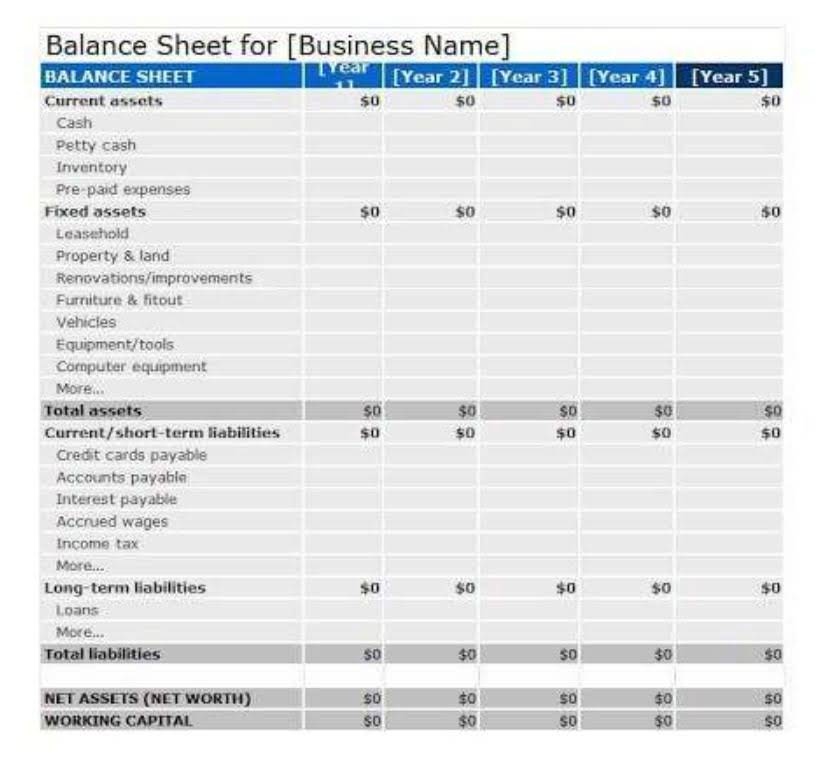
Current ratio is a financial metric used to assess a company’s ability to pay off its short-term liabilities with its short-term assets. More than just a simple formula of assets and liabilities, the current ratio is used by various stakeholders to assess a company’s financial health and liquidity. The current ratio is a critical measure of a company’s financial well-being, specifically focusing on its short-term liquidity. By understanding how to calculate the current ratio and interpreting its values, stakeholders can make informed judgments about the company’s capacity to meet its short-term obligations. However, it’s important to remember that no single metric provides a complete picture. Using the current ratio alongside other financial indicators, like the quick ratio, can offer a more comprehensive understanding of a company’s financial stability.
- Below is a break down of subject weightings in the FMVA® financial analyst program.
- Obotu has 2+years of professional experience in the business and finance sector.
- Companies that focus only on short-term financial health may miss important information about the company’s long-term financial health.
- Finally, we’ll answer some frequently asked questions, including what happens if the current ratio is too high and whether the current ratio can be manipulated.
- Current assets are assets that are expected to be converted into cash or used up within one year, such as cash, accounts receivable, inventory, and short-term investments.
Competition – How Does the Industry in Which a Company Operates Affect Its Current Ratio?

By extending payment terms or negotiating discounts for early payment, a company can improve its cash flow and increase its ability to meet short-term obligations. However, balancing this strategy with maintaining good relationships with suppliers is essential. A company’s current liabilities are the other critical component of the current ratio calculation. Analyzing the composition of a company’s current liabilities can provide insights into its ability to meet its short-term obligations. The current ratio measures a normal balance company’s liquidity, which refers to its ability to convert assets into cash quickly.
Economic Conditions – How Does the Industry in Which a Company Operates Affect Its Current Ratio?

If a retailer doesn’t offer credit to its customers, this can show on its balance sheet as a high payables balance relative to its receivables balance. Negative working capital is never a sign that a company is doing well, but it also doesn’t mean that the company is failing either. Many large companies often report negative working capital and are doing fine, like Wal-Mart.
Current Ratio Guide: Definition, Formula, and Examples – Frequently Asked Questions
Another disadvantage of using the current ratio formula is its lack of specificity. This is because the ratio includes all the assets that may not be easily liquidated such as inventory and prepaid expenses. For instance, an equal increase in current assets and liabilities will reduce the current ratio while an equal decrease in current assets and liabilities will increase the ratio. Investors can use this type of liquidity ratio to make comparisons with a company’s peers and competitors. Ultimately, the current ratio helps investors understand a company’s ability to cover its short-term debts with its current assets.
- A company with an increasing current ratio may hoard cash and not invest in future growth opportunities.
- If the company holds too much inventory that is not selling, it can tie up cash and reduce the current ratio.
- The data you need is in the company’s financial statements; the values for current assets and current liabilities are on the balance sheet.
- This cash infusion would increase the short-term assets column, which, in turn, increases the current ratio of the company.
- The ideal current ratio can vary by industry, and investors must consider industry-specific variations when evaluating a company’s current ratio.
Common mistakes when calculating the current ratio
Perhaps this inventory is overstocked or unwanted, which eventually may reduce its value on the balance sheet. The current ratio is most useful when measured over time, compared against a competitor, or compared against a benchmark. A current ratio of less than 1.00 may seem alarming, but a single ratio doesn’t always offer a complete picture of a company’s finances. The ratios are also used in comparing to the previous periods to analyze the company’s condition over time; whether it is improving or getting Cash Flow Management for Small Businesses worse. Since the company is holding off on issuing payments, the increase in payables and accrued expenses tends to be perceived positively.
Comparing performance over time
In addition, it is crucial to consider the industry in which a company operates when evaluating its current how to figure current ratio ratio. Some industries, such as retail, may have higher current ratios due to their high inventory levels. In contrast, other industries, such as technology, may have lower current ratios due to their higher levels of cash and investments. However, there is a significant difference between the current vs quick ratio.
Unlocking the Potential of Excel’s Data Dashboard

For example, we have the balance sheet and income statement of the company ABC Limited as below. Since technology is not going anywhere and does more good than harm, adapting is the best course of action. We plan to cover the PreK-12 and Higher Education EdTech sectors and provide our readers with the latest news and opinion on the subject. From time to time, I will invite other voices to weigh in on important issues in EdTech.
The current ratio depends on a company’s accounting policies, which can vary between companies and impact current assets and liabilities calculation. A current ratio above 2 may indicate that a company has many cash or other liquid assets that are not used effectively to generate growth or investment opportunities. On the other hand, a current ratio below 1 may indicate that a company may have difficulty paying its short-term debts and obligations.
Part 2: Calculating Current Ratio
- By extending payment terms or negotiating discounts for early payment, a company can improve its cash flow and increase its ability to meet short-term obligations.
- In order to help you advance your career, CFI has compiled many resources to assist you along the path.
- It’s possible a new management team has come in and righted the ship of a company that was in trouble, which could make it a good investment target.
- A high current ratio can make it easier for a company to obtain credit, while a low current ratio may make it more difficult to secure financing.
- Therefore, even though its ratio is 1.45x, strictly from the short-term debt repayment perspective, it is best placed as it can immediately pay off its short-term debt.
Potential creditors use this ratio in determining whether or not to make short-term loans. The current ratio can also give a sense of the efficiency of a company’s operating cycle or its ability to turn its product into cash. In addition to the current ratio, it is essential to consider other financial metrics when evaluating a company’s financial health. For example, the debt-to-equity ratio can provide insight into a company’s long-term debt obligations.
